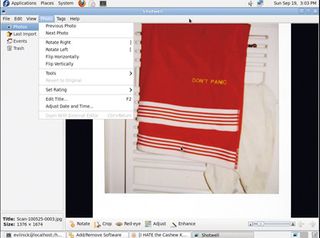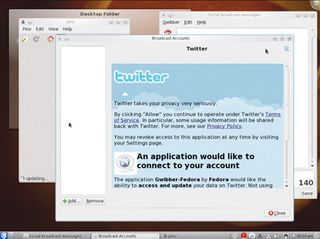Ubuntu vs Fedora: which is best?
How the next generation of desktop Linux distros compare
It may seem a little surprising, but Fedora and Ubuntu are not exactly poles apart when it comes to desktop software. As they both use Gnome as the default desktop, there are a fair smattering of Gnome applications included as defaults – Evolution and Empathy, for example.
There are certainly more similarities than differences in terms of the software used – OpenOffice.org, Totem, Firefox, Shotwell…
The last is an interesting case. Ubuntu trialled Shotwell on the Unity netbook environment, and the response was so positive that F-Spot has been dropped altogether from the minimal install (though obviously it is still a supported package).
This gives a slight inkling about what is going on the the desktop space – Ubuntu is more and more focused on the user experience and, if we might be excused for saying it, is taking an Apple-like approach to things by preferring the simple over the complex and the well-integrated over standalone apps.

By contrast, if you ever read the developer lists on Fedora, you will quickly pick up the sense that, while they like things to be nice and neat, there is no general intention to second-guess what users might ultimately want – the goal is to deliver the best and newest software and let the user control the environment it is used in. "Freedom, friends, features, first" is the Fedora mantra.
That first one is possibly still the strongest element of the four, as Fedora is fanatical about omitting software not under an OSI-approved licence (like many codecs, drivers and other useful bits).
The right stuff
Get daily insight, inspiration and deals in your inbox
Get the hottest deals available in your inbox plus news, reviews, opinion, analysis and more from the TechRadar team.
The result for the user is that things don't necessarily work as expected. In a fresh installation, Fedora lacks the ability to play MP3 files for example, or many types of video codec. Their way around this is to use PackageKit to suggest non-free software to fill the gap (providing you have configured the necessary repositories).
Ubuntu does exactly the same, except that there is no need to add repositories for GStreamer, for example, as it already exists in the 'unsupported' Ubuntu repository. Similarly, the 'restricted' area contains binary graphics drivers that are non-free software (not available to Fedora users unless you add unofficial repositories).

Why does this difference matter? Ubuntu goes out of the way to make things easier for the user, who often couldn't care less if they are 'tainting' their system, whereas Fedora goes out of its way to do the right thing.
In the case of video drivers for example, they have been extremely pro-active in getting the open source Nouveau driver for Nvidia devices out and tested. Even so, Ubuntu obviously gives the desktop more love, and perhaps has more of an idea about what the users want – it is rather popular after all, despite the constant criticism it comes in for.
An invisible touch
One new area of the populist touch is the integration of social media functionality, by which we mostly mean that Gwibber forms part of the default install and you can use it to let your Facebook or Twitter contacts know what you are up to.
More than that though, Gwibber author Ryan Paul and the development team have worked in conjunction with the Ubuntu desktop team to find ways of exposing the interface at a more fundamental level. This has resulted in the creation of libgwibber, which acts as an API for applications wishing to access microblogging functionality, used to some effect so far by the Ubuntu Software Centre for one.
Although you might question the necessity of letting your Twitter contacts know what you have installed, this is just a taste of what's to come. Code has been released to easily integrate the Gwibber library with any desktop code, so you can expect those little buttons you currently see on blogs to start popping up all over your desktop apps too – maybe.
Apart from just bothering your friends with the fact that you just installed the latest kernel, the Ubuntu Software Centre now has an improved search facility, a history function and a new software store. The integration of a software purchasing scheme is interesting, but what's even more so is what we might see there.
At the moment there's just a dummy app there to demonstrate the functionality, but the idea is that you will be able to buy software and install it through the interface. What software though? Well, that remains to be seen – it would be nice if were along the lines of independent gaming titles rather than corporate anti-virus stuff.
Current page: Ubuntu vs Fedora: The desktop
Prev Page Ubuntu vs Fedora: System matters Next Page Ubuntu vs Fedora: Virtualisation